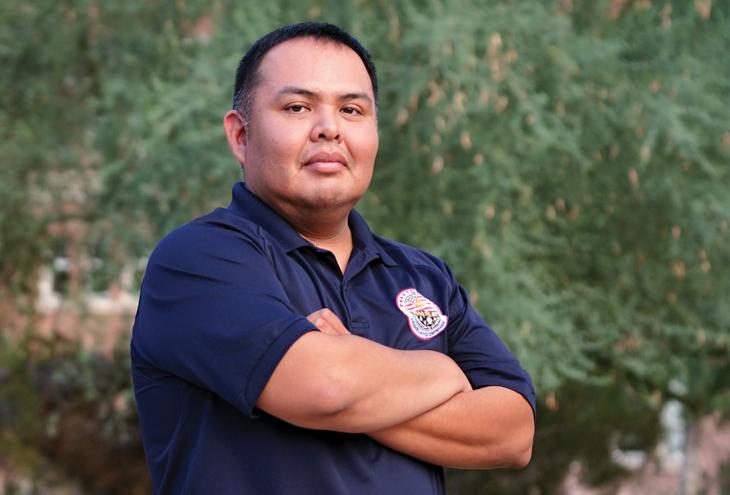It’s not much of an exaggeration to say that a single question changed the direction of Joshua John’s life. He was studying for his undergraduate physics degree at Northern Arizona University when he took a quantum mechanics class. “I asked the professor how this would be used and what the applications were,” recalls John, who graduated in 2005. “My professor said those are questions an engineer asks, not a physicist. He encouraged me to go into engineering after graduating.”
John took that advice. Today, he is a senior systems engineer for Raytheon Missile Systems in Tucson, Ariz. In that role, John is a team lead in the Space Interceptors Integration and Verification department, where he works with a team that conducts flight tests of so-called “kill vehicles” that are able to intercept and destroy incoming ballistic missiles. It’s a challenging role, with obvious national security implications, that requires someone skilled in everything from data collection and analysis to field testing. It’s a job that John has performed so well that he earned this year’s Most Promising Engineer or Scientist Award from AISES.
Though it may not have been obvious at the time, John’s career path has followed a logical progression since his childhood on the Navajo Nation in Shiprock, N.M. He inherited his aptitude for hands-on problem-solving from his father. “My dad was a tinkering guy,” recalls John, “and when I was growing up he was into model planes. He got me interested in stars, planets, and constellations during nights spent at his grandpa’s sheep camp.” John has fond memories of trips with his father to an airstrip to watch others flying model planes, and an occasional nearby air show. “It was amazing to see anything related to aerospace,” he says.
As a young professional, John received important mentoring and guidance from others in the Raytheon American Indian Network (RAIN). And over the past 12 years he has participated in AISES and RAIN STEM activities, like the RAIN Youth Day, where he shares his own STEM journey with young Native students.
That initial interest in anything and everything that flies was paired with John’s mother’s intense focus on education. “Even when I was a small child, my mom was talking about college,” he remembers. In fact, John attended his first college class when he was just three or four years old. His mom was earning her own degree, and when she couldn’t find a babysitter, she took him to class with her. She also made sure that learning was part of everyday life, even on vacations. “Since my mom was a teacher, school never ended for me. We didn’t go to Disneyland — we had to go to museums or national parks or historic sites,” he says. “Looking back, I appreciate it.”
Initially John was intent on a career with NASA, ideally as an astronaut. That goal led him to the New Mexico Military Institute and then Northern Arizona University. But once he realized that engineering was a better fit, John found a natural home at Raytheon, which recruited him when he earned his undergraduate degree. Earlier this year he earned an MS in systems engineering from Johns Hopkins University.
John now has more time to give back to Native American students, which has been a priority for him for many years. As a young professional, John received important mentoring and guidance from others in the Raytheon American Indian Network (RAIN). And over the past 12 years he has participated in AISES and RAIN STEM activities, like the RAIN Youth Day, where he shares his own STEM journey with young Native students. He also has conducted his own outreach to reservation schools in both Northern Arizona and New Mexico. John’s group at Raytheon recently hired a Navajo intern, and John has already begun mentoring and helping him — just as RAIN members helped him when he first joined the company. “I showed him the ropes and what needs to be done,” he says. “It’s important to me to be the kind of mentor and role model I had to help me get to where I am in my career today.”













